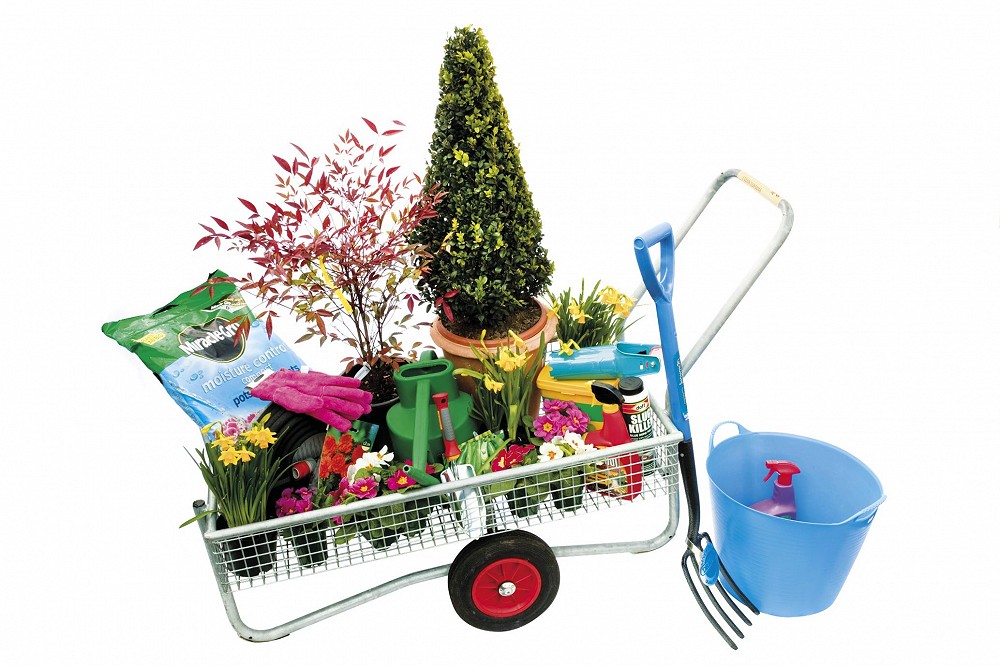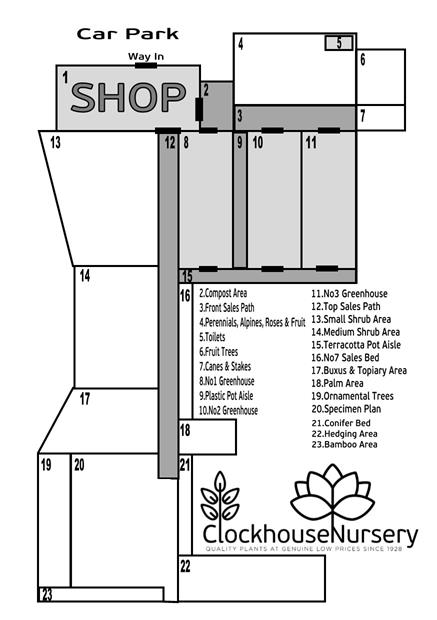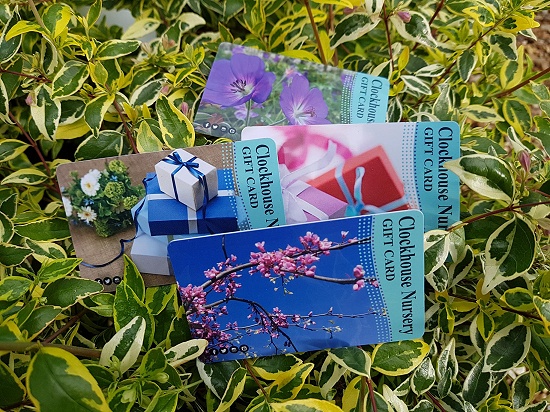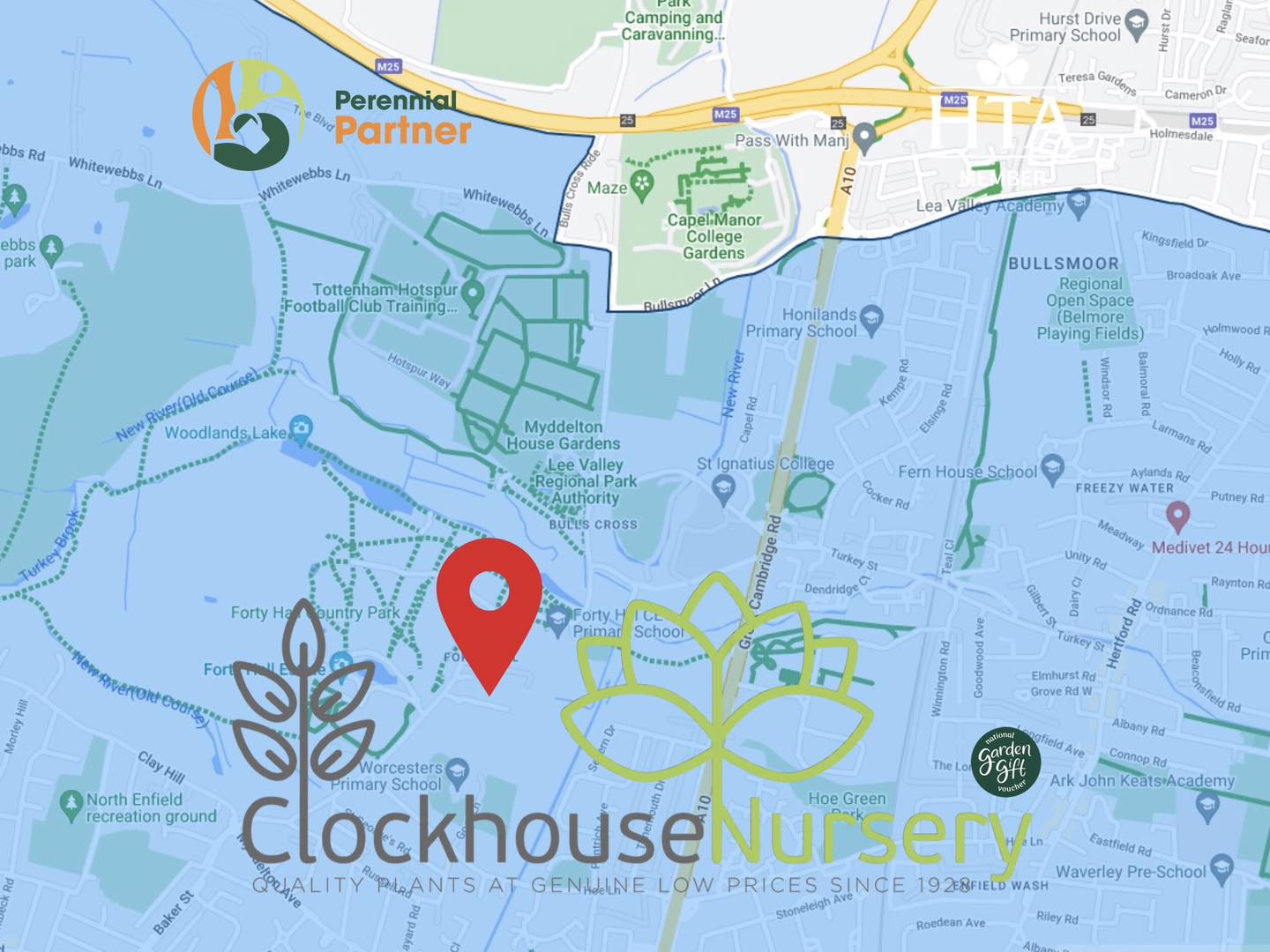


Allium is a rather large group of plants. Essentially they are onions although here we will be talikng about the ornamental alliums grown for their beautiful drumstick flowers.
They are best planted in freely drained soils in full sun & they are drought tolerant. Damp sites are best avoided so that there is less possibility of the bulbs rotting. There is one main issue that people have with alliums. In most cases, by the time flowers are being produced in either spring or early summer, the foliage is begining to look very tired. The plants withdraw energy from the foliage & concentrate it on producing flowers & ultimately seeds.
How do you avoid this? You cannot. It is just part of this plants natural processes, but what you can do is divert attention away from the browing foliage. Grow you alliums in combination with other plants that will cover or disguise the lower portion of the plants. You can also snip off completely spent foliage with sharp secateurs or gardening scissors once they are completely brown. Remember, allium flower heads look very attractive as seed heads too, so consider keeping them in place as a feature.
As an interesting aside, there are now a new generation of dwarf alliums that flower whilst keeping lush foliage. Alliums like “Millenium” & “Summer Beauty”, whilst being more compact & having smaller bloom heads, produce immaculate flowers & foliage at the same time. Who knows, maybe this innovative breeding will creep into the larger flowered types in the future.
One of the most popular Salvias in modern gardening is Salvia “Hot Lips”. It is a tough, hardy, very floriferous form of sage with aromatic foliage that has now been joined by several other variants such as “Ametyst Lips”.
Sometimes gardeners complain that their “lips” flowers are being produced ‘lip less’. There a couple of reasons for this & we will endeavour to explain them here for you.
The flowers produced early in late spring or the beginning of summer are usually one solid colour. Hot lips will be red, amethyst lips will be amethyst etc. The variegated lip element generally begins to kick in around July-August & sometimes after that, they may even produce flowers that are pure white. The reasons for this change in flowering styles is associated with daylight length & moisture levels. If you want your “Lips” style salvias to produce the best flower variegation then you need to plant them in full sun in freely drained soils even though they are tolerant of less light & more moisture. If you have followed these guidelines & your plants are still only producing one colour flowers try reducing the level of moisture & increasing exposure to direct sunlight.
There may be one other rare possibility. Whilst we make every effort to ensure that our plants are correctly labelled, there is always the possibility that you have picked up the wrong plant. There are varieties of salvia, within the same family line as the ‘Lips’ varieties, that have solid colour flowers. Varieties such as “Radio Red” or “Nachvlinder”. Some retailers & growers may not be as fastidious as us when it comes to correct labelling plus some customers have a tendency of putting the wrong plants back in the wrong place when shopping. Plus, lets not pretend that mistakes do happen. However, this is not the usual reason for your plant being lip-less.
We think that a little education on this subject is over-due.
What are they?
Vine weevil are a native woodland species that loves to munch on young fibrous roots whilst it is in its larvae stage. It then grows into a ‘robotic walking’ weevil which likes to eat semi-circular chunks from the leaves of many adult plants. They are a real pain, difficult to control as they can only be effectively treated with insecticides or natural predators at the larvae stage. When developed into weevils they are cunning in their hiding places, resistant to a lot of insecticides, non-appetizing to wildlife and able to cover great distances in their pursuit of food.
Why do we not have many problems with them?
Commercially for a number of years the trade has used a vine weevil deterrent chemical in our composts. This ensures a period of breathing space so that our young plants can establish their roots without something gobbling them. This is why we ‘very rarely’ have any problems with the larvae. However we, like you, cannot defend against the weevil attacks on foliage and being surrounded by gardens and woodland, we cannot eradicate them from our nursery completely.
Mis-indentification.
Vine weevil eggs are very…very small, less than 1mm and are not easy to see with the naked eye. What people have normally noticed in their compost is Osmocote. This is a commercially used and publically available slow release fertilizer. Hard, orangey-brownish yellow pellets contain the fertilizer and when these become moist, they swell slightly and become translucent yellowish green in colour. The moisture, coupled with correct ambient temperature, allows the pellets to release fertilizer at a controlled rate throughout the growing season. It is applied using two different methods. Individual pellets are mixed within the compost mixture or when low nutrient composts are reaching the end of their fertilizing stage, tablets (lots of pellets glued together) can be pushed into the compost near the surface. Many customers in the past have complained about their plants dying and then go on to reveal that they have rummaged through the compost, disturbing the root system, to remove the ‘vine weevil or slug eggs’ that were in the pot with the plant. Of course root disturbance of this degree will often result in a dead plant.
How to treat if you do find some.
There are two main methods for treating vine weevil at grub stage. You can buy a liquid insecticide designed to drench the soils in containers which will need to be applied once the weather warms up during the spring & possibly once or twice more during the summer. There are also natural nematode applications which are microscopic predators of the vine weevil. They are applied in dilution to the soil of pots or gardens & then they actively prey on vine weevil grubs. Once they have done their job, they perish, so annual application is necessary. There is another method, but it usually comes too late after most of the damage has been done to root systems. Manually pick off & crush the adult beetles. This will at least help prevent them from mating & producing new eggs for the next generation. Unfortunately the adults tend to be more active from dusk onwards making them extremely difficult to spot.
We hope that this information will prove helpful in re-assuring you that we are not in the habit of knowingly spreading nasty little troublesome insects among our customers.
Lily beetle and its larvae are leaf-eating insects of lilies and fritillaries. The adult beetles are very occasionally found on other plants but lilies and fritillaries are the only plants on which eggs are laid and the grubs develop. Apart from spoiling the plants’ appearance, attacks in early summer can result in undersized bulbs developing, which may not flower next year. Lily beetle has become widespread in the UK over the past three decades.
Symptoms
Gardeners should look out for; Adult beetles which are 8mm long and have bright red wing cases and thorax. The head and legs are black Clusters of orange-red, sausage-shaped eggs on the undersides of leaves Larvae which reach 6-8mm long and are rotund, reddish brown with black heads. They are usually completely hidden under their own wet black excrement Young grubs graze away the underside of leaves, resulting in white or brown dried up patches. The older grubs eat entire leaves, starting at the tips and working back to the stem, they will also feed on petals, stem and seed pods Adult beetles make rounded holes in the leaves and will also feed on petals and seed pods
Control
Non chemical control
Where only a few lilies and fritillaries are being grown, the plants should be regularly inspected from late March onwards so that adult beetles, larvae and eggs can be removed by hand.
Chemical control
Pesticides are likely to be more effective on larvae than adults Heavy infestations which are impractical to remove by hand can be treated with pesticides Organic insecticides containing natural pyrethrins (e.g. Bug Clear Gun for Fruit or Defenders Bug Killer, ecofective Bug Killer (also contains fatty acids)). Several application of these short persistence products may be necessary to give good control Synthetic pyrethroid pesticides such as lambda-cyhalothrin (e.g. Westland Resolva Bug Killer), or deltamethrin (e.g. Sprayday Greenfly Killer) can be used The systemic neonicotinoid insecticide acetamiprid (e.g. Bug Clear Ultra) can also be used Plants in flower should not be sprayed due to the danger to pollinating insects.
Biology
Red lily beetle overwinters as adult beetles in soil, leaf litter and other sheltered places. This could be anywhere, not necessarily in the vicinity of lilies and fritillaries. Consequently, there is no advantage in attempting to treat the soil below lily plants. The beetles begin emerging on sunny days in late March and April when they seek out the foliage of host plants. Eggs are laid in small batches on the underside of leaves during April to mid-summer. The eggs hatch and the larvae feed on the foliage. When fully fed, the larvae go into the soil to pupate. The next generation of adult beetles emerges from mid-summer onwards. These beetles add to the feeding damage but there is only one generation a year and these late summer adults will not mate and lay eggs until the following year.
Information freely available on RHS website :https://www.rhs.org.uk/advice/profile?pid=553
Box tree caterpillars feed within webbing and can completely defoliate box plants. It is a relatively new insect to Britain. Whilst the adult moth was first reported in the UK in 2008, caterpillars were not found in private gardens until 2011, it has since become widespread in London and surrounding areas.
Quick facts
Common name Box tree caterpillar Scientific name Cydalima perspectalis Plants affected Box (Buxus) Main symptoms Foliage is eaten and covered in webbing Most active April-October
What is box tree caterpillar?
Box tree caterpillars are the larvae of a moth that feeds on box (Buxus) plants. It is native to East Asia and it became established in Europe in 2007. Although adult moths were first found in the UK in light traps in 2008, it was not until 2011 that larvae were reported in private gardens in the home counties. By the end of 2014 the moth had become established in parts of London and surrounding counties; in many cases the caterpillars had caused severe defoliation indicating that the moth is likely to become a serious problem.
Symptoms
Gardeners are likely to become aware of box tree caterpillar when they find webbing and caterpillars on box plants. The pale yellow flattish eggs are laid sheet-like, overlapping each other on the underside of box leaves Newly hatched caterpillars are greenish-yellow, with black heads. Older caterpillars reach up to 4cm (1¼in) in length and have a greenish/yellow body with thick black and thin white stripes along the length of the body The pupae are concealed in a cocoon of white webbing spun among leaves and twigs The adult moth usually has white wings with a faintly iridescent brown border, although the wings can be completely brown or clear. The moth has a wingspan of around 4cm (1¼in) The caterpillars eat box leaves and produce webbing over their feeding area. Plants may also show patches of dieback which may be especially apparent on trimmed plants. This is not to be confused with dieback caused by the disease known as box blight.
Control
Non chemical control
Where practical, caterpillars should be removed by hand A pheromone trap which can help monitor adult moth activity is available from several suppliers including Agralan The mixed nematode biological control sold as Fruit and Vegetable Protection may have some effect on the larvae
Chemical control
Extensive infestations can be treated with an insecticide. Thorough spray coverage is required if control is to be achieved Forceful spraying is needed to penetrate silk webbing The contact pyrethroid insecticides pyrethrum (considered organic e.g. Bug Clear Gun for Fruit and Veg or Defenders Bug Killer,), deltamethrin (e.g. Provado Ultimate Fruit & Vegetable Bug Killer, Sprayday Greenfly Killer), lambda-cyhalothrin (e.g. Westland Resolva Bug Killer) may have some effect. The systemic neonicotinoid insecticide acetamiprid (e.g. Bug Clear Ultra) can also be used Plants in flower should not be sprayed due to the danger to pollinating insects
Choose alternatives to box
Where it has become impractical to control box tree caterpillar an alternative hedge or topiary plant can be used. Ongoing trials of a variety of compact, evergreen shrubs at RHS Garden, Wisley are showing promise as alternatives. The following all have small leaves and can be clipped into formal hedging styles:
Berberis darwinii ‘Compacta’, Berberis thunbergii ‘Atropurpurea Nana’, Euonymus fortunei (various cultivars), Ilex crenata (Various cultivars), Lonicera nitida ‘Maigrün’, L. nitida ‘Baggesen’s Gold’, Luma apiculata ‘Glanleam Gold’, Osmanthus delavayi, Pittosporum ‘Arundel Green’, P. ‘Collaig Silver’, P. ‘Oliver Twist’, P. tenuifolium ‘Golf Ball’, Rhododendron Bloombux, Ugni molinae,U. molinae ‘Butterball’.
Biology
The biology of the box tree caterpillar in the UK is not yet fully known, as it is relatively recent here, but it may have two or three generations per year. It overwinters as small caterpillars, hidden between box leaves that have been spun together with silk in autumn, and completes its development in spring. The adult moth is capable of flight, but it is not known how far it can travel.
Information freely available on RHS website https://www.rhs.org.uk/advice/profile?PID=760
Here are some botanical plates that we created during lockdown aimed at helping you understand a plants foliage in a little more depth.
Here are some botanical plates that we created during lockdown aimed at helping you understand a flowers in a little more depth.
Here are some botanical plates that we created during lockdown aimed at helping you understand fruits & a plants ‘habit’ in a little more depth.
Garden retail like it used to be.
Here at Clockhouse Nursery we pride ourselves in providing reasonably priced plants & the products you need to grow them effectively.
That is all.
So, no need to wade through the tide of unnecessary paraphernalia that you will find in most modern garden centres.
No need to worry about parking either as we have over 150 spaces available.
We are a CASHLESS establishment. Accepted payment metohds: credit / debit cards (contactless or otherwise), Gift vouchers & voucher cards, Apple or Android Pay.
This IS perfectly legal: https://www.bankofengland.co.uk/explainers/what-is-legal-tender


The vast majority of our sales areas are accessible to all. Pathways are either tarmac or concrete both outside & inside greenhouses. We have done our best to make sure that most areas can be reached by wheelchair users although in few areas this has not been 100% possible to achieve. It is an ongoing aim of ours to improve on this situation further.
You will find three designated wheelchair friendly parking zones adjacent to the shop entrance plus several other parking spaces around the car park which provide ample space for easy access to a vehicle once parked. We provide Male, Female & Accessible toilet facilities. Should you need to borrow a wheelchair, we have two, free to use, ‘push along’ style chairs on site. These are available on a ‘first come first served’ basis & you cannot book or reserve their use in advance of your visit. We advise that wheelchair users are accompanied during their visit as there are some slopes that may prove tricky for inexperienced users. Our site is on a natural gradient & we have managed to mitigate this in some areas but not all.
Should you require any internet based services to assist you, you can log onto our free WIFI whilst you visit. Just ask a member of staff for the access code when you arrive.
We have six ‘St Johns Ambulance’ trained first aid operatives within our staff. They are fully qualified in the ‘First Aid At Work’ training module. There are a number of first aid kits at their disposal around our site including an AED device.

Over recent years we have put a lot of effort into making our nursery as easilly accessible as possible. The entire sales area & car park have hard sufaces made from either concrete or tarmac. Outside pathways are wide and our sales beds are sturdy brickwork allowing customers to sit & take a rest if one of our benches is too far away or already occupied.
We feel that you will be able to navigate our nursery with ease, whether you are here for a leisurely browse or a calculated ‘in & out’ quick shop. Free copies of the nursery map (shown to the right) are available from our customer services desk, they also have a shop layout map on the back of them. Don’t forget, a member of staff will be more than happy to point you in the right direction.
We hope that you enjoy your visit.

Discounts do not apply to promotion items, special offer items, gift vouchers, bedding plants, delivery costs or compost.
| You Spend | Payment |
|---|---|
| £350-£649 | 5% discount |
| £650-£949 | 7% discount |
| £950+ | 10% discount |

If you have absolutely no idea what to buy for as a gardening gift but you do know that the recipient is a Clockhouse Nursery customer, we can offer you a Clockhouse Nursery specific gift card. Available in four designs & similar to many highstreet gift cards in size. Simply request one at the tills, choose your design & it can then be pre loaded with an amount of your choice. Once loaded the amount on the card can be used as part payment or in its entirety. Please don’t forget to mention to your family & friends that they can become part of the Clockhouse “Garden Gang” by signing up for our loyalty card too!
We also stock & accept “National Garden Gift Voucher Cards” which are accepted at over 2,000 leading UK garden centres, shops and nurseries. With National Garden Vouchers you have the choice of over 90,000 garden products from saplings to pagodas all gardeners will find something they’d like. A National Garden Gift Voucher is great for any special occasion, and whether the lucky recipient is an experienced gardener, or just starting out, they’ll be able to buy everything they need with the thoughtful gift. (Please note that we no longer sell the paper form of these vouchers however, we do continue to accept them as long as they are in date & validated by the retailer).
We are committed to ensuring that we sell excellent quality plants at what we deem to be reasonable prices. Many of our plants are grown here on site which enables us to maintain quality control to a very high level. Other plants are supplied by trusted companies, many of which have been in business for decades. We are always available to advise customers on the correct care for plants pre-purchase.
Because of this confidence in our product we do not offer a plant guarantee. However should you experience a problem with your plant within six months of purchase we will consider either replacement, refund or we will advise you on a course of action to take to resolve the issue. The plant will usually need to be returned & it must be accompanied with valid proof of purchase in the form of our itemised till receipt. We do NOT accept responsibility for plants damaged by weather conditions ( i.e. frost or extreme heat), or poor aftercare. A plant is a perishable good reliant on correct level of aftercare for survival. As such, after six months we relinquish responsibility for its nurturing & hand that duty 100% to the purchaser.
Should you change your mind about a ‘non plant’ product after purchase you may return it to us providing that the packaging has not been opened, the product has not been used, the product is still in saleable condition, with a valid receipt, within 28 days of purchase. Also, should the product be found to be faulty, it should be returned to us inside of 28 days with valid proof of purchase. Return or refund outside of 28 days may also be considered if the product meets the previous requirements stated. Plant returns should be within 5 working days. The plant will need to be in exactly the same condition as it was at the time of purchase and accompanied with a valid receipt. You will be offered cost equivalent exchange, or refund to the original method of payment.This will be at the discretion of management.
If a product had been delivered by us its return is soley the responsibility of the purchaser. We will not offer a pick up service unless extreme circustances dictate that there is no other option. In such a case the purchaser may be liable for the cost of pick up. This will be at the discretion of management.
All refunds will be credited in the same fashion as initially received, i.e. if you paid by card, the refund will need to be issued to the same card.
PLEASE NOTE We are now inside the London Ultra Low Emissions Zone. We do not accept responsibility for the the payment of ULEZ fines issued to customers when visiting our establishment nor do we accept responsibility for ULEZ fines issued to customers returning faulty or unsuitable goods.
We do not offer refunds or guarantees on any sale or stock clearance items.
Please keep your receipt as proof of purchase. (A bank statement is not sufficient to prove the purchase of individual items).
This does not affect your statutory rights.
We are now inside the London Ultra Low Emission Zone (blue area on the map).
The closest that you can get to us without a ULEZ compliant vehicle is the west section of Bullsmoor Lane as far as the mini roundabout.
Thank you in advance to customers whom wish to stick with us despite not having a compliant vehicle.
We hope that the savings you make shopping with us can compensate for the £12.50 fine.
PLEASE NOTE We do not accept responsibility for the the payment of fines issued to customers when visiting our establishment nor do we accept responsibility for fines issued to customers returning faulty or unsuitable goods.

Our number one chosen charity is Perennial.
We are a Perennial Platinum Partner which means that we make an annual donation to this organisation. Sometimes we may add links to our social media posts which will enable our followers to donate directly to this charity.
This is a charity which specifically helps people within horticulture, & their families, with a wide range of requirements.
Current president is Alan Titchmarsh. Perennial Chief Executive, Jamie Gault, offered his congratulations: “Alan stands as a cornerstone of Perennial’s legacy and his contribution has been significant not only shaping the trajectory of Perennial but also inspiring a profound sense of purpose and solidarity within the horticulture community, making a lasting impact that resonates far and wide.”
If you would like to find oout more about Perennial & their work or maybe see if they could help you, here is a link to their website https://perennial.org.uk/
We are not seeking any other direct associations with charities as Perennial is a perfect fit for us at this time.

We are a dog friendly establishment.
This means that well behaved dogs, on leads, are welcome in all parts of our nursery.
We would only ask dog owners to be respectful of our customers that may not like our canine friends & that they clean up after their pooches.
You can search for other Dog Friendly places to shop, stay, walk etc here https://www.dogfriendly.co.uk/

Please feel free to send us a message or ask a question directly via this e-mail form.
Copyright Clockhouse Nursery Ltd 2018. Registered No. 05500875. Registered office address: Springfield House, 99/101 Crossbrook Street, Waltham Cross, Hertfordshire, EN8 8JR. Web Design by CNS Media. Privacy Policy.